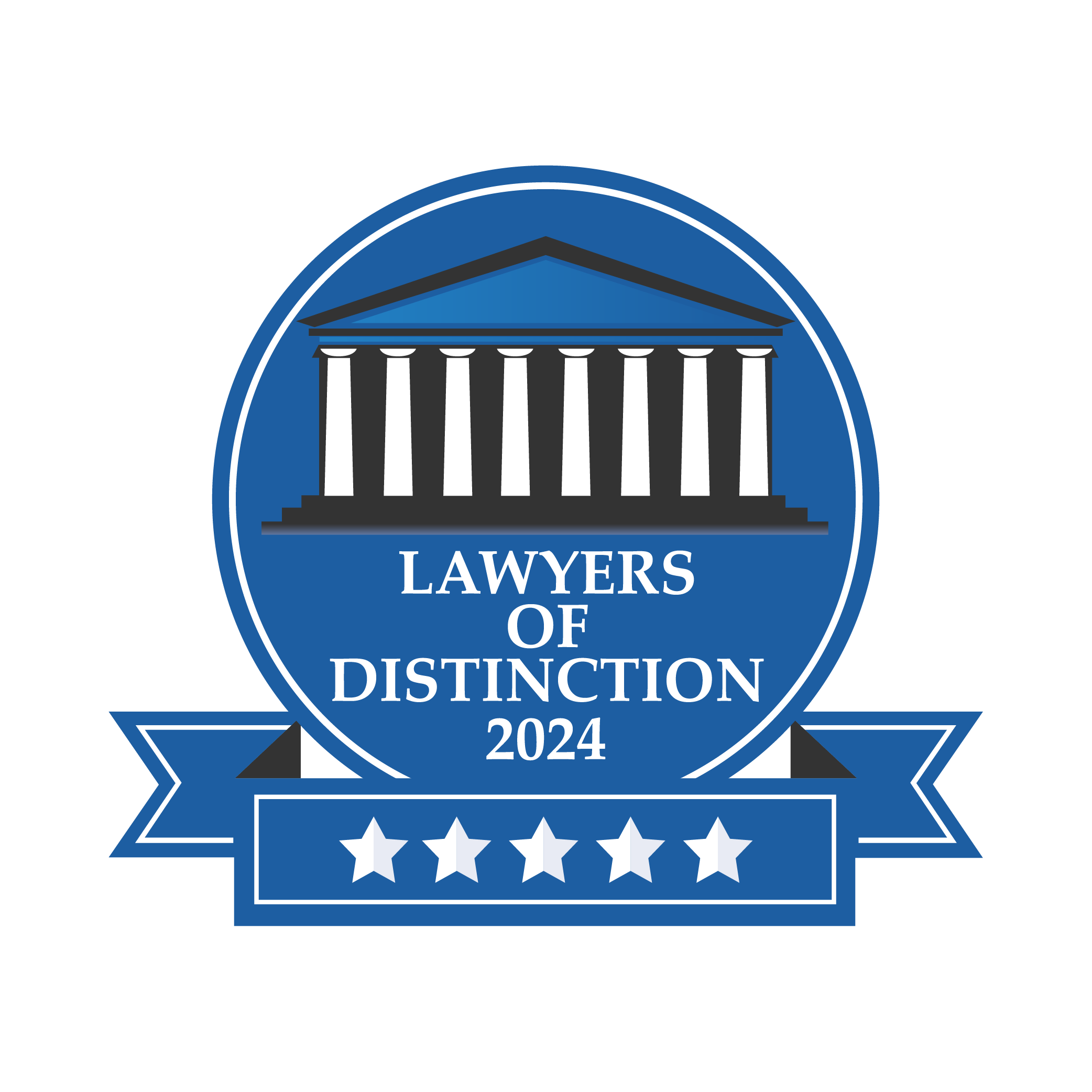In 2024, Nevada officials reported that Clark County, home to Las Vegas, experienced its deadliest year ever on the roads. State data revealed 293 people were killed in traffic accidents across the county, marking a 12 percent increase from the 258 deaths recorded the previous year. This surge in fatalities highlights growing safety concerns for drivers and pedestrians in the Las Vegas area.

Causes of Car Accidents in Las Vegas
Car accidents in Las Vegas have been on the rise, with data showing an average of one fatal crash and three serious injuries happening every week. According to Vision Zero safety data, several recurring factors contribute to the growing number of dangerous crashes throughout the city.
Distracted Driving
Drivers texting, talking on the phone, adjusting navigation, or even just not focusing on the road are a leading cause of accidents. With the bright lights and constant buzz of activity near the Strip, it’s easy for motorists to become unfocused, taking their attention off driving for just a few critical seconds.
High Speeds
Fast-moving vehicles are a consistent danger on Las Vegas roads. Individuals often exceed the posted speed limits either to get ahead of traffic or because they’re running late. High speeds not only increase the odds of a crash but make collisions much more deadly due to the greater force on impact.
Impairment
Alcohol and drug use is a persistent problem, especially in a city known for its nightlife. Drivers impaired by alcohol, cannabis, or other substances have reduced reaction times, lower awareness, and poor judgment, all of which raise the risk of being involved in a serious wreck.
Roadway and Intersection Construction
Frequent construction causes sudden lane shifts, unclear signage, and unanticipated traffic patterns around Las Vegas. This confusion increases the likelihood of a crash, as motorists may encounter unexpected stops, roadblocks, or closures, sometimes with little warning.
Failure to Obey Traffic Control Devices
Ignoring stop signs, red lights, or flashing signals also leads to many collisions. In busy intersections or high-traffic tourist areas, even a single car running a signal can set off a chain reaction, putting drivers, pedestrians, and bicyclists in harm’s way. Understanding these major causes can help drivers stay vigilant and avoid risky behavior, reducing both the severity and likelihood of accidents on Las Vegas roads.
Common Injuries from Las Vegas Car Accidents
Las Vegas car accidents often lead to a wide range of injuries, some of which can have long-term effects on victims’ lives. Here are some of the most common types of injuries seen after crashes in the area:
Head and Brain Injuries
Concussions and traumatic brain injuries can result from hitting your head against a steering wheel, dashboard, or window. Even minor accidents can cause serious symptoms like memory loss and headaches.
Neck and Back Injuries
Whiplash, herniated discs, and spinal cord injuries are especially common, often causing chronic pain and reducing mobility. These injuries can require months or even years of treatment.
Broken Bones and Fractures
Arms, legs, ribs, and wrists are frequently broken or fractured in car accidents. Some fractures are complex and demand surgery and long recovery periods.
Cuts, Lacerations, and Bruises
Crash debris, shattered glass, or impact with hard surfaces inside a car can lead to deep cuts or severe bruising, sometimes leaving permanent scars.
Internal Injuries
The force of a collision can cause damage to organs like the liver, spleen, or lungs, which may not show symptoms right away but can be life-threatening if not treated quickly. These injuries highlight why it’s so important to seek immediate medical care after any crash, even if you feel fine at first.
Nevada Car Accident Laws You Should Know
Navigating a car accident claim in Nevada means understanding several important state laws, which can affect your rights and overall recovery. Here’s what every driver should know about how accident claims work in Nevada:
Fault-Based Insurance System
Nevada follows a fault-based, or “tort,” insurance system. That means the driver who is legally found responsible for causing the accident is on the hook for the damages, usually through their insurance. If you’re injured in a crash that isn’t your fault, you file your claim against the other driver’s insurance, not your own. This is different from “no-fault” states, where each driver’s own insurer pays some or all costs.
Comparative Negligence Rules
If both you and the other driver share responsibility for the accident, Nevada’s modified comparative negligence rule will apply. Under this rule, you can recover damages as long as you are found 50% or less at fault for the crash. However, your compensation is reduced by whatever percentage of fault is assigned to you.
NRS 41.141 When comparative negligence not bar to recovery; jury instructions; liability of multiple defendants.
1. In any action to recover damages for death or injury to persons or for injury to property in which comparative negligence is asserted as a defense, the comparative negligence of the plaintiff or the plaintiff’s decedent does not bar a recovery if that negligence was not greater than the negligence or gross negligence of the parties to the action against whom recovery is sought.
2. In those cases, the judge shall instruct the jury that:
(a) The plaintiff may not recover if the plaintiff’s comparative negligence or that of the plaintiff’s decedent is greater than the negligence of the defendant or the combined negligence of multiple defendants.
(b) If the jury determines the plaintiff is entitled to recover, it shall return:
(1) By general verdict the total amount of damages the plaintiff would be entitled to recover without regard to the plaintiff’s comparative negligence; and
(2) A special verdict indicating the percentage of negligence attributable to each party remaining in the action.
3. If a defendant in such an action settles with the plaintiff before the entry of judgment, the comparative negligence of that defendant and the amount of the settlement must not thereafter be admitted into evidence nor considered by the jury. The judge shall deduct the amount of the settlement from the net sum otherwise recoverable by the plaintiff pursuant to the general and special verdicts.
4. Where recovery is allowed against more than one defendant in such an action, except as otherwise provided in subsection 5, each defendant is severally liable to the plaintiff only for that portion of the judgment which represents the percentage of negligence attributable to that defendant.
Statute of Limitations for Personal Injury Claims
Nevada law gives you just two years from the date of your accident to file a lawsuit for personal injury. If you miss this deadline, you could lose your legal right to any compensation, no matter how serious your injuries are.
(e) Except as otherwise provided in NRS 11.215 or 11.217, an action to recover damages for injuries to a person or for the death of a person caused by the wrongful act or neglect of another. The provisions of this paragraph relating to an action to recover damages for injuries to a person apply only to causes of action which accrue after March 20, 1951.
It’s important to act quickly, gather evidence, and talk to a Las Vegas personal injury lawyer as soon as possible to make sure you don’t miss this critical cutoff. Understanding these Nevada laws can make all the difference in protecting your recovery after an accident. If you have any questions or you’re ready to get started, contact us today to schedule a free consultation.

